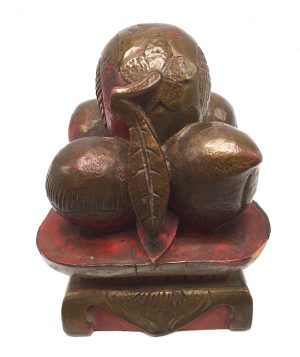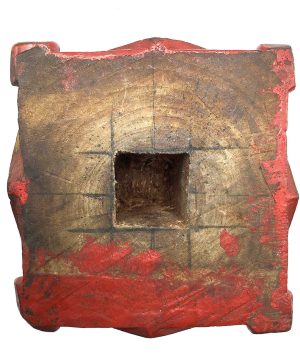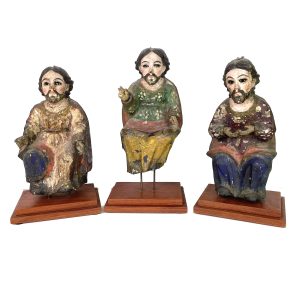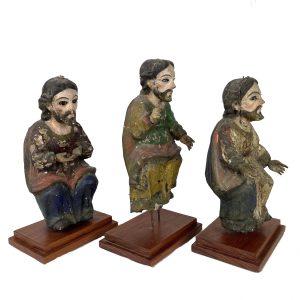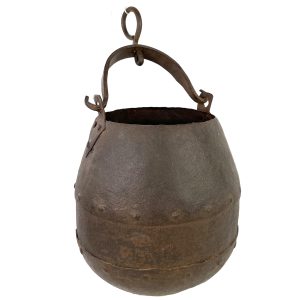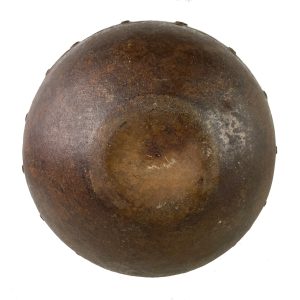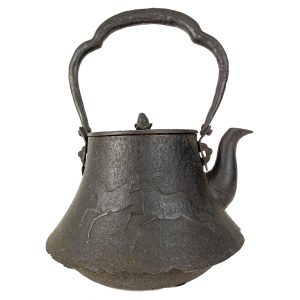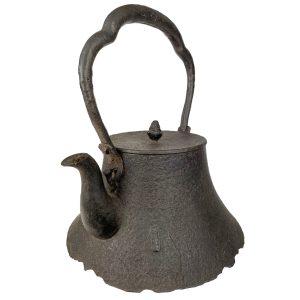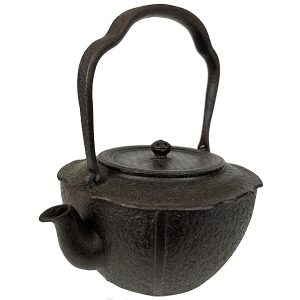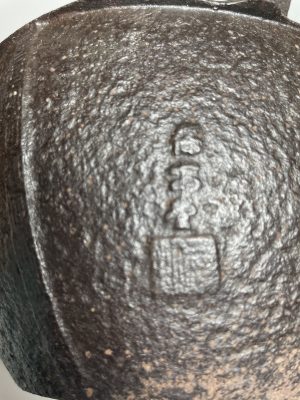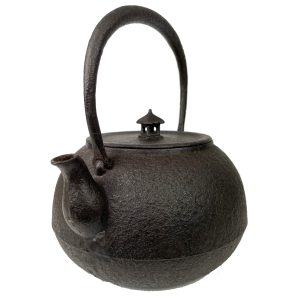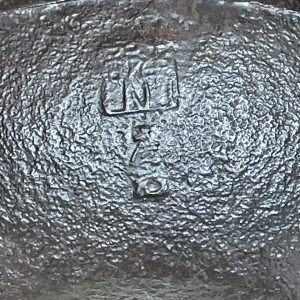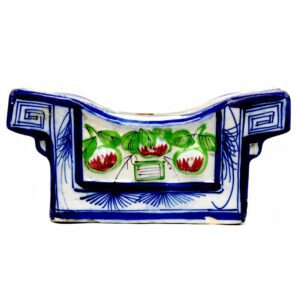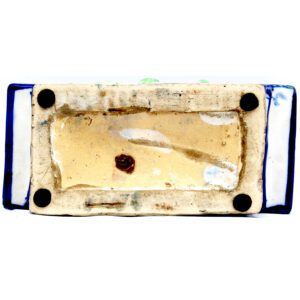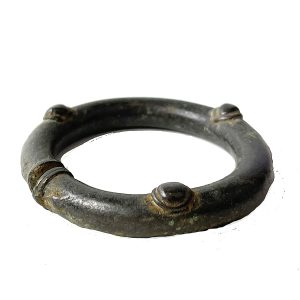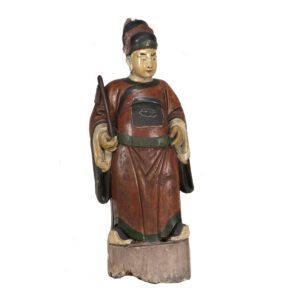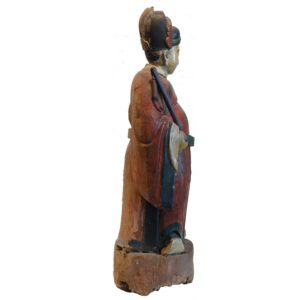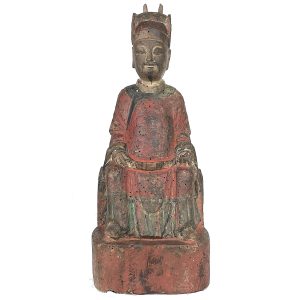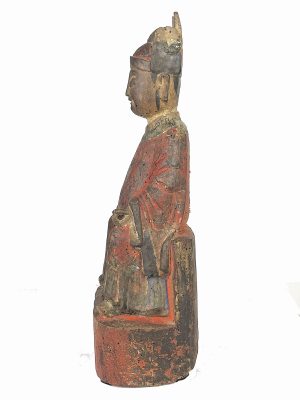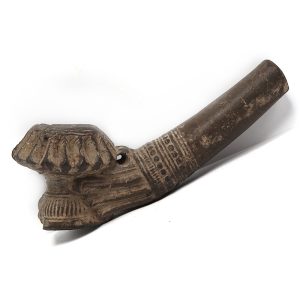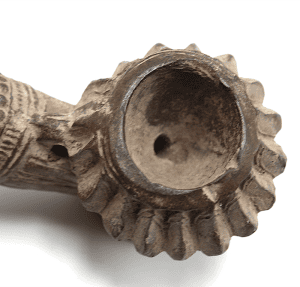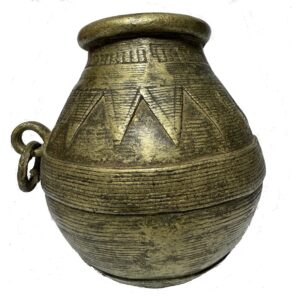Showing 49–60 of 430 results
-
Sale!


$225.00 Original price was: $225.00.$155.00Current price is: $155.00.
H: 4.75 ” Dia: 3.675 ” | FREE SHIPPING WITHIN CONTINENTAL U.S.
This carved food offering was an auspicious bed ornament to bring the lucky couple prosperity, health, a long life and many sons as the pomegranate symbolizes fertility, the peaches longevity. Carved offerings were often wedding gifts.
-
Sale!


$1,475.00 Original price was: $1,475.00.$1,250.00Current price is: $1,250.00.
Tallest H: 11″ W: 5.5″ D: 3.5″ | CALL 213-568-3030 OR EMAIL [email protected] FOR SHIPPING
This rare trio of carved Apostles emanate a sense power and feeling that conveyd the emotion and spiritual character of the figures and what they represent. Each mounted on 2-tiered wood base.
-
Sale!


$150.00 Original price was: $150.00.$85.00Current price is: $85.00.
H: 12.75″ Dia: 7″ | FREE SHIPPING IN CONTINENTAL U.S.
Simple attractive antique welded Indian iron pot with warm rust color patina. Clear lines indicate where pieces were joined in its construction. Egg shape with a rounded bottom for easy pouring, it has a warmth to add charm to any room, especially a kitchen or filled with dried flowers.
-
Sale!


$695.00 Original price was: $695.00.$550.00Current price is: $550.00.
Ht: 12.5″ W: 10″ D: 9.5″ | CALL 213-568-3030 OR EMAIL [email protected] FOR SHIPPING COST
Made in the Meiji era (1868-1912),this hand crafted antique Japanese cast iron tetsubin teapot has an unusual decorative handle and curved spout and has a beautiful relief design of galloping horses. Horses have been revered creatures in Japanese culture that embody grace, power and nobility. The knob on the lid probably represents a lotus, the Buddhist symbol of purity and enlightenment. As with all antiques, these pieces are purely decorative for display purposes only.
-
Sale!


$325.00 Original price was: $325.00.$275.00Current price is: $275.00.
Ht: 8.625” W: 7.5” D: 6.5” | CALL 213-568-3030 OR EMAIL [email protected] FOR SHIPPING COST
The hand crafted Tetsubin teapot displays simple yet elegant design: a scalloped top, gently curved handle, and short rounded spout, textured surface. The body is divided in 4 quadrants with meander border designs and the lid is has tiny diamond shaped indentations and is topped with a lotus shaped knob. A raised manufacturers seal on the back. Like all old Tetsubin cast iron kettles, it has rust on the bottom which can be removed by boiling green tea inside it, and is thus for display purposes only.
-
Sale!


$295.00 Original price was: $295.00.$245.00Current price is: $245.00.
Ht: 9.25″ W: 8″ D: 7.25″ | CALL 213-568-3030 OR EMAIL [email protected] FOR SHIPPING COST
Meiji hand crafted cast iron Tetsubin, simple yet elegant textured surface, unique shape top temple ornamental knob. Manufacturer’s seals on side. Perfect tea lovers gift, it is recommended for display only to enhance any kitchen.
-
Sale!


$115.00 Original price was: $115.00.$105.00Current price is: $105.00.
H: 4″ W: 9.5″ D: 4.5 ” | FREE SHIPPING
Multicolored ceramic opium pillow, hand-painted green and red florals, fruits and vases in relief, blue cobalt border. Top and bottom seals to approve for export as antique.
-


$395.00
Prehistoric Thai Bronze Age jewelry, adzes and tools have been found all over Thailand. Excavations from various soil levels show many sites had been inhabited for millennia. They confirm the existence of an early, well-developed metallurgical tradition of bronze digging and cutting tools, adzes (ancient axe like tools to cut wood), adult and child’s bronze…
-
Sale!


$4,800.00 Original price was: $4,800.00.$3,750.00Current price is: $3,750.00.
H: 32″ W: 9″ D: 8″ | CALL 213-568-3030 OR EMAIL [email protected] FOR SHIPPING
Lu Donghin, most celebrated of 8 Taoist Chinese Immortals, rides on clouds with a 2-edged sword to cut through greed, lust, sorrow. Venerated in temples, grottoes, sacred mountains, he is associated with medicine, elixir of life and power over evil spirits. This 18th large figure with cloud design on chest.
-
Sale!


$395.00 Original price was: $395.00.$295.00Current price is: $295.00.
H: 13.75″ W: 5.25″ D: 4″ | FREE SHIPPING WITHIN CONTINENTAL U.S.
This ancestor figure portrayed as a Chinese civilian official honors the family with his sign of high status. He grasps his official’s belt, his red robes symbolize fu for auspicious blessings. Unlike many serious officials he is approachable, with a smiling face.
-
Sale!


$90.00 Original price was: $90.00.$80.00Current price is: $80.00.
H: 1.875” W: 1.75” D: 4” | FREE SHIPPING within continental us.
Mold made with intricate designs, clay earthen ware tobacco/opium pipes were woven into Burmese and Thai Hill Tribe social and cultural traditions. This is a unique gift a pipe smoker, although for decorative purposes only.
-
Sale!


$165.00 Original price was: $165.00.$125.00Current price is: $125.00.
H: 4.25” Dia: 4” | FREE SHIPPING IN CONTINENTAL U.S.
Dhorka brass lost wax grain and rice measuring bowl. One-of-a-kind intricately decorated with horizontal and triangular striations. Bowls were symbol of Hindu goddess Lakshmi placed on home altars for puja.
End of content
End of content

